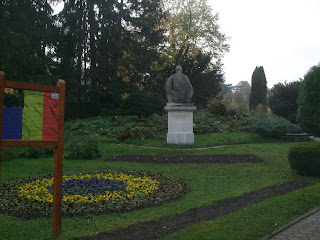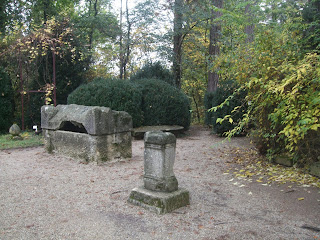Imagine you have a Grandma whom you love to bits, but sometimes she's getting on your nerves, so much that you want to leave home. Because she is doing things that completely lack in logic, and making your life hard, while finding your way around, even in the smallest everyday matters. Those of you who may have had a problematic grandparent surely understand the analogy. And now, guess what? Your precious Granny is turning 100 years old, as the 1st of December marks the Great Unity of 1918, the day when we became one big country. So, you decide to buy her some gifts she could use in order to make her life (and yours) easier.
These days are difficult though, and so have been the last two years. Bad governance, tensions, protests, and consequently people getting more and more nervous and unsatisfied about life in Romania. Sometimes we got the feeling that all the political tensions had the (good) side effect of uniting the people, but this feeling is rather short lived, or comes occasionally in hot spurs, and then we go cold-turkey on each other again.


What do we want, in order to stop feeling so fed up with everything? What presents could good-old Romania use at the venerable age of 100 years old?
1. Leaders who (at least) try ruling the country considering people's needs, not only their own advantages and bank accounts.
2. More schools and hospitals, and better conditions in the already existing ones, and less churches and cathedrals, because we already have enough of these. And that mammoth cathedral in the center of Bucharest...just don't ask!
3. And if it really has to be churches, may the Church get more involved in helping those in need. I know that some priests do get involved, but some others just glitter...on the surface.
4. Decent salaries and pensions, for everyone to be able to support themselves. It's heartbreaking to see some people beg in the street, whilst some politicians have so much money that they could feed a small town each.
5. Good roads and infrastructure. Highways. And most of all, people who drive carefully.
6. People who respect each other, who use common sense and common courtesy and can lift a hand to help others if necessary. People who are also givers, not just getters.
7. Care for the environment, be it in the middle of nature or on the cities' streets, as it is already suffering.
8. Restructuring roads and buildings. We have jewels of architecture, which unfortunately give the impression that as soon as you touch them with a finger, they are going to crumble.
9. People who are learners and doers, permanently evolving, without complacency and ignorance, and without expecting exclusively solutions from 'above'.
10. People who end up in high positions because they deserve it. 'Nuff said!
11. Obtaining basic administrative documents with ease, and without complicated bureaucratic practices. 'Nuff said part 2!
12. Last but not least... love. People (with and without power) who love her, each other and life in this country!
I wanted to make a list of 100 presents, but in the end I kept it simple and realistic. And in my opinion, what I wrote here is not exactly 'the sun, moon and stars', although for us this stuff sometimes feels just as unattainable as pink unicorns. For other countries, they are just normal. Why shouldn't it be like this for us too?
As for me, I am realistic enough and I have lived abroad long enough to know that no place on this Earth is perfect. Nor do I fancy myself as some amateur political analyst who tries to interpret why some things are happening and predict what is going to happen in the future, engaging in some over-drammatic speculations, and seeing only the negative in all situations. I am just analyzing what is working and what's not, from the simple perspective of everyday life, independently from political orientation. I know that I don't like what is happening now, I know what changes I'd like to see, but I am also aware that it's highly up to ourselves as well. Oh, yeah, and that includes going to vote when elections are on! Don't say that the country is sh*tty, because you are part of it too, and besides, it's the people who create society, be it made of sh*t or creme brulee'! :P
Nevertehelss, I am happy to be here and to be alive on this day. After all, it is 100 years old. The roundest number ever! And I bet 100% that I won't be around to see the 200th anniversary. So, why not enjoy it and be grateful?! Romania may not be world's most evoluted country, but let's keep in mind that we had it many times worse in the past.
La multi ani, Romania mea!
Nevertehelss, I am happy to be here and to be alive on this day. After all, it is 100 years old. The roundest number ever! And I bet 100% that I won't be around to see the 200th anniversary. So, why not enjoy it and be grateful?! Romania may not be world's most evoluted country, but let's keep in mind that we had it many times worse in the past.
La multi ani, Romania mea!
























































